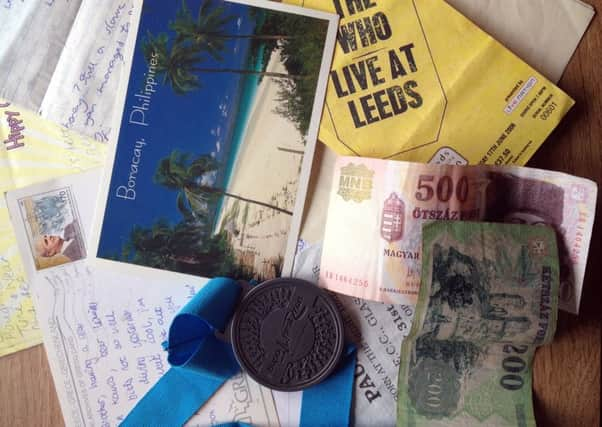Chris Bond: When it comes to memories, give me the '˜real' thing


When was the last time you received a postcard? In fact, when was the last time you even wrote one?
A picture of a sun-kissed beach in the Balearics, or a crumbling Greek temple accompanied by a handwritten note from a friend and relative informing you of what a lovely time they were having, was once as much a feature of our summer holidays as the smell of freshly mown grass and the sound of Greensleeves blaring out from the ice cream van.
Advertisement
Hide AdAdvertisement
Hide AdBut while the latter remain a reassuring characteristic of an English summer, the good old postcard in all its tacky glory has largely become a thing of the past, a relic of an era that is fast-disappearing from view.
Where we once wrote letters and penned postcards, we now send emails and post photographs on Instagram, Facebook or Twitter.
I recently stumbled across some old letters and postcards sent years ago by friends, some of whom I’m no longer in contact with, which reminded me of just how much our lives have changed in the past 20 years.
This was reinforced by a study published yesterday by a marketing firm which found that more than three-quarters of 12 to 13 year-olds it questioned ranked their Facebook friends above those from school. Not only that but 67 per cent said they would rather chat online than meet up with friends in person.
Advertisement
Hide AdAdvertisement
Hide AdBut the digital world has not only revolutionised the way we communicate with one another, it has also transformed the way we collect things and record our lives.
Most of us collect personal mementoes and belongings over the years. Traditionally these would be holiday snaps, books and CDs. Together they form a picture of who we are and, in the case of our music collections, create a soundtrack to our lives.
We are all curators, to use that ubiquitous word, of our own lives. But in a world where physical objects are being slowly supplanted by digital alternatives, does our digital presence mean as much as something you can look at and hold? Something real?
I still have old coins and notes of long since defunct currencies from fondly-remembered holidays, I also have love letters, football programmes, ticket stubs, sports certificates (school Open Long Jump champion for 1985).
Advertisement
Hide AdAdvertisement
Hide AdI have, and I suspect I’m not alone, accrued all manner of what some might call tat – but each one triggers a memory.
We keep these things because they mean something to us. That’s why I’m always disappointed whenever I’m sent an e-ticket for a concert because it doesn’t give me a physical reminder of that particular gig.
I’m not going to keep a text message telling me I have a ticket, it’s just not the same. It doesn’t have the same relevance.
It’s the same with a letter from a friend. We’re far more likely to keep a handwritten note than an email. And what about photos? My wife and I have hundreds of photographs that have all been carefully uploaded into different albums ready for us to look at and reminisce over. But we don’t, look at them that is.
Advertisement
Hide AdAdvertisement
Hide AdYoung people nowadays photograph everything they do and share it on Facebook or Instagram. Some people dismiss this as the vanity of youth, but another way of looking at is they are doing it as a way of chronicling their lives and creating a footprint, albeit a digital one.
We increasingly record more of our lives online and harness the technology behind it, but there is something reassuringly familiar about seeing and holding physical objects.
It’s easy to get sentimental about such things, but these personal possessions do matter. They are little signposts that when pieced together point to who we are and say to the world – “I was here.”